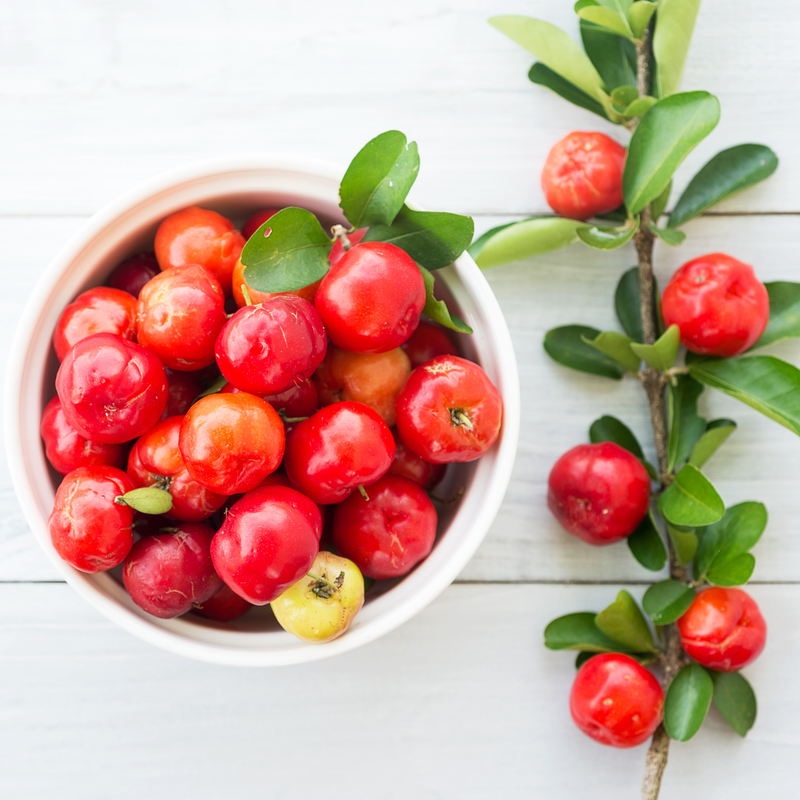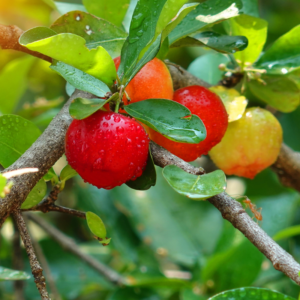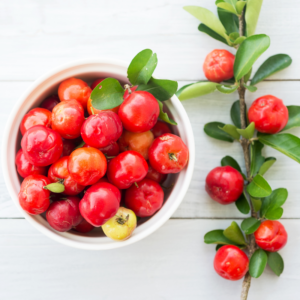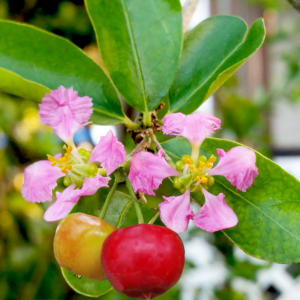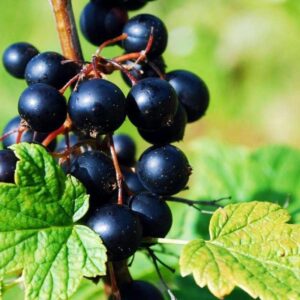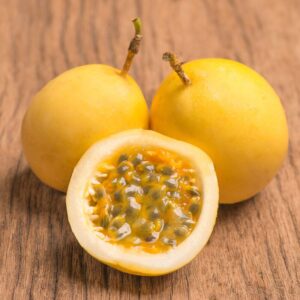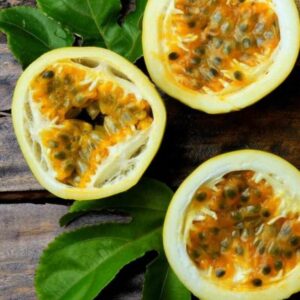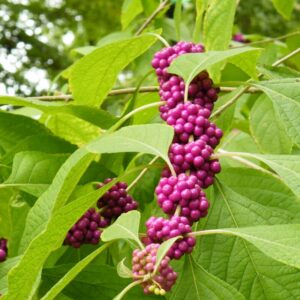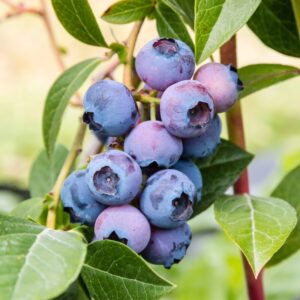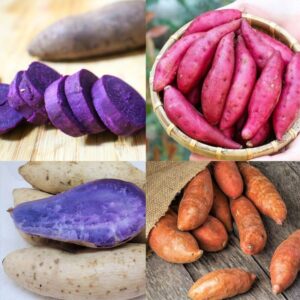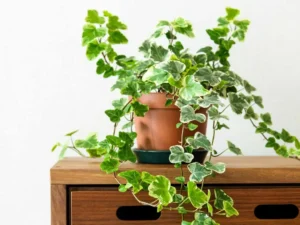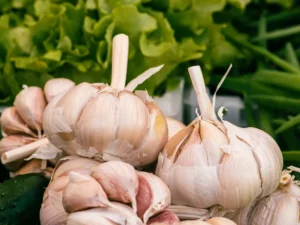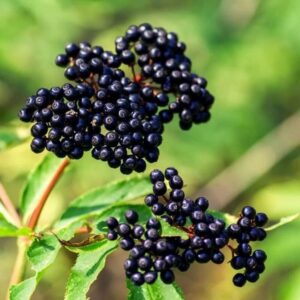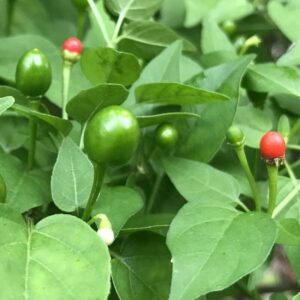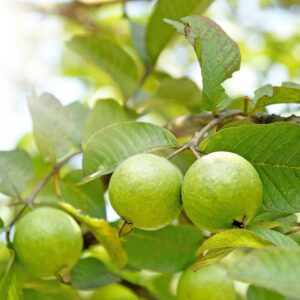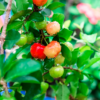Barbados Cherry Tree Acerola 5-8 Inch
Barbados Cherry Tree Acerola 5-8 Inch
Discover the Barbados Cherry Tree, a tropical delight with vibrant red fruit and glossy leaves, perfect for gardens or containers.
$29.99

With our Alive & Thrive Guarantee, we’ve got your back for the first 30 days! If you have any concerns about your plants, just reach out to us. Our team is here to help answer your questions and guide you in selecting the best plants for your garden, climate, and unique preferences. We're excited to help you create the garden of your dreams!
Transform Your Garden with the Barbados Cherry Tree
The Barbados Cherry Tree, also known as Acerola, is a stunning addition to any garden. This compact, evergreen tropical tree not only enhances your landscape with its attractive foliage but also bears delicious, nutrient-rich fruit. With bright red-orange cherries, this tree provides ornamental and edible value, making it a versatile choice.
Featuring glossy, dark green leaves, the tree adds depth to your outdoor space. Throughout the year, it delights with delicate pink flowers, creating a visual feast in any garden. The fruit, resembling cherries, offers a tangy taste and is packed with vitamin C, providing health benefits.
Ideal for warm climates, the Barbados Cherry Tree thrives in USDA Zones 9-11 and prefers well-drained soil with full to partial sun. Growing up to 10 feet tall, it can also remain compact in containers, making it perfect for patios or small gardens.
Caring for your Barbados Cherry Tree is straightforward. Regular watering keeps the soil moist, while the tree is drought-tolerant once established. Prune for shape and health, and fertilize during the growing season to boost flowering and fruit production.
The Barbados Cherry Tree is more than just a fruiting plant; it’s an ornamental gem that enhances any tropical garden. With its unique blend of beauty and nutrition, this tree is the ideal addition to your outdoor space.
Frequently Asked Questions
- What is the mature size of the Barbados Cherry Tree? It can grow 3-10 feet tall and 3-6 feet wide.
- What USDA zones are suitable for this tree? It thrives in Zones 9-11.
- How much sunlight does the tree need? It prefers full sun to partial shade.
- When is the best time to plant the Barbados Cherry Tree? Spring or summer is ideal for planting.
- How do I care for my Barbados Cherry Tree? Regular watering and occasional pruning are recommended for optimal growth.
Related products
-
USDA Hardiness Zone
Zones 9-11 -
Soil type
Loamy, well-drained soil -
Sunlight Exposure
Full sun to partial shade -
Expected Planting Period
Best planted in spring or summer
Best Types of Ivy Plant for Houses: How to Choose the Perfect Ones for Your Home
Are you a garden lover looking to introduce some greenery into your home? Maybe you’ve
Nov
When to Harvest Garlic (Especially Fall-Planted Garlic)
TIMING IS EVERYTHING, they say – and for garlic, that truth hits with surprising accuracy.
Nov
11 of the Best Sweet Potato Varieties to Grow for Your Garden
If you’ve ever tried growing sweet potatoes, you know that picking the right variety can
Nov
The Comprehensive Guide to Growing Bay Leaf Plants for a Flavorful Garden
Imagine stepping into your garden, greeted by the earthy aroma of fresh bay leaves, their
Nov
Pruning Bougainvillea for Winter
Bougainvillea vines are known for their dazzling display of magenta, orange, and fuchsia bracts that
Nov
The Comprehensive Guide to Growing Clerodendrum Wallichii for a Stunning Garden
Imagine walking into a garden where delicate white flowers hang from graceful branches, their petals
Nov
8 Mistakes to Avoid When Planting Garlic That 90% of Gardeners Make
Planting garlic can be a rewarding experience, but many gardeners, especially beginners, end up making
Oct
Garlic Varieties: Everything You Need to Know Before Choosing the Right Type to Grow
If you’ve ever tried growing garlic, you know that choosing the right variety can make
Oct
-
USDA Hardiness Zone
Zones 9-11 -
Soil type
Loamy, well-drained soil -
Sunlight Exposure
Full sun to partial shade -
Expected Planting Period
Best planted in spring or summer
Transform Your Garden with the Barbados Cherry Tree
The Barbados Cherry Tree, also known as Acerola, is a stunning addition to any garden. This compact, evergreen tropical tree not only enhances your landscape with its attractive foliage but also bears delicious, nutrient-rich fruit. With bright red-orange cherries, this tree provides ornamental and edible value, making it a versatile choice.
Featuring glossy, dark green leaves, the tree adds depth to your outdoor space. Throughout the year, it delights with delicate pink flowers, creating a visual feast in any garden. The fruit, resembling cherries, offers a tangy taste and is packed with vitamin C, providing health benefits.
Ideal for warm climates, the Barbados Cherry Tree thrives in USDA Zones 9-11 and prefers well-drained soil with full to partial sun. Growing up to 10 feet tall, it can also remain compact in containers, making it perfect for patios or small gardens.
Caring for your Barbados Cherry Tree is straightforward. Regular watering keeps the soil moist, while the tree is drought-tolerant once established. Prune for shape and health, and fertilize during the growing season to boost flowering and fruit production.
The Barbados Cherry Tree is more than just a fruiting plant; it’s an ornamental gem that enhances any tropical garden. With its unique blend of beauty and nutrition, this tree is the ideal addition to your outdoor space.
Frequently Asked Questions
- What is the mature size of the Barbados Cherry Tree? It can grow 3-10 feet tall and 3-6 feet wide.
- What USDA zones are suitable for this tree? It thrives in Zones 9-11.
- How much sunlight does the tree need? It prefers full sun to partial shade.
- When is the best time to plant the Barbados Cherry Tree? Spring or summer is ideal for planting.
- How do I care for my Barbados Cherry Tree? Regular watering and occasional pruning are recommended for optimal growth.
Related products
PLANTING & CARE
Best Types of Ivy Plant for Houses: How to Choose the Perfect Ones for Your Home
Are you a garden lover looking to introduce some greenery into your home? Maybe you’ve
Nov
When to Harvest Garlic (Especially Fall-Planted Garlic)
TIMING IS EVERYTHING, they say – and for garlic, that truth hits with surprising accuracy.
Nov
11 of the Best Sweet Potato Varieties to Grow for Your Garden
If you’ve ever tried growing sweet potatoes, you know that picking the right variety can
Nov
The Comprehensive Guide to Growing Bay Leaf Plants for a Flavorful Garden
Imagine stepping into your garden, greeted by the earthy aroma of fresh bay leaves, their
Nov
Pruning Bougainvillea for Winter
Bougainvillea vines are known for their dazzling display of magenta, orange, and fuchsia bracts that
Nov
The Comprehensive Guide to Growing Clerodendrum Wallichii for a Stunning Garden
Imagine walking into a garden where delicate white flowers hang from graceful branches, their petals
Nov
8 Mistakes to Avoid When Planting Garlic That 90% of Gardeners Make
Planting garlic can be a rewarding experience, but many gardeners, especially beginners, end up making
Oct
Garlic Varieties: Everything You Need to Know Before Choosing the Right Type to Grow
If you’ve ever tried growing garlic, you know that choosing the right variety can make
Oct





